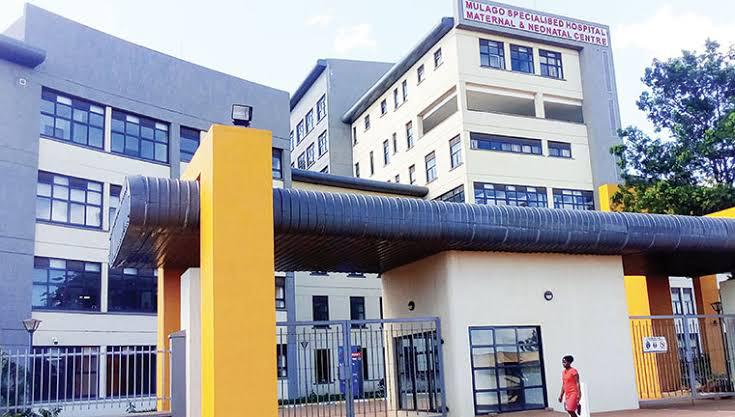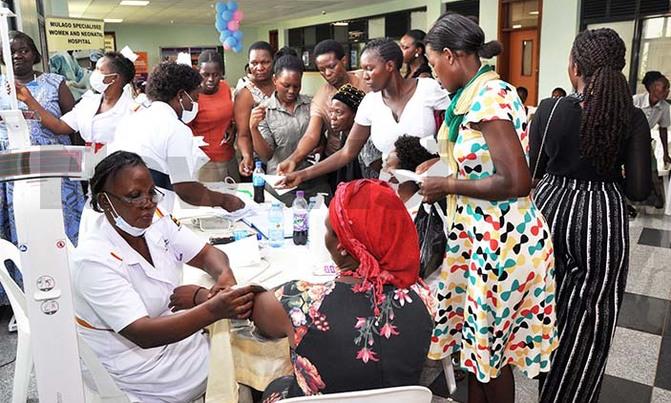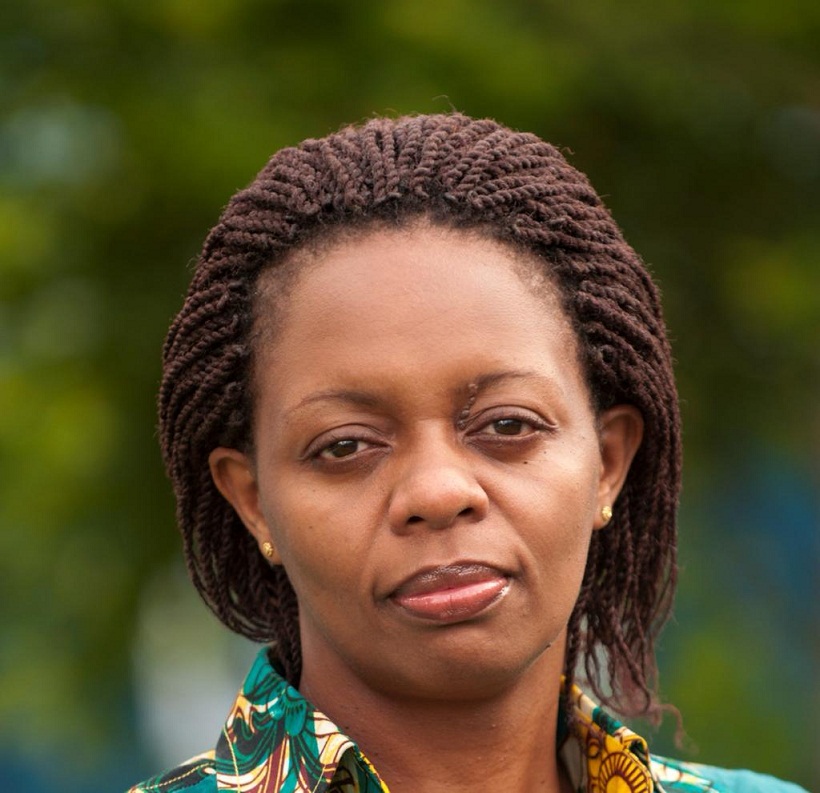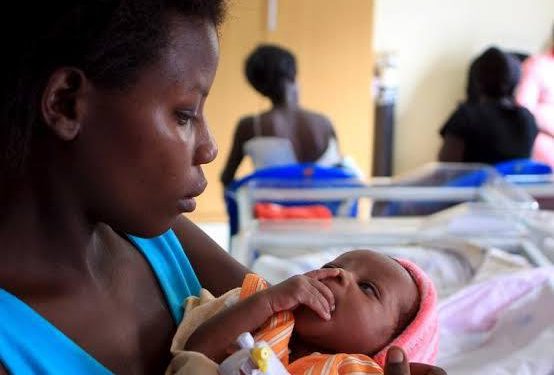BY: PATRICIA MUNABI BABIIHA
The Covid-19 pandemic, which has turned tables upside down across the world, has brought to the fore the inherent limitations of our health care system, raising more questions and demanding new approaches to how we engineer solutions for society. One of the multi-dimensional aspects of the pandemic that became ever more obvious is the income inequality gap and how that affects different regions. This was more apparent in parts of Europe like the United Kingdom and the United States of America where evidence demonstrates that people of colour were disproportionately affected.
In a September 2020 article titled, ‘Beyond the Case Count: The Wide-Ranging Disparities of COVID-19 in the United States’ the authors argued that, “The COVID-19 pandemic’s impact in the United States has exposed long-standing inequities by race, ethnicity, and income.” A Commonwealth Fund analysis from April, they noted, showed that confirmed COVID-19 cases and deaths were disproportionately higher in communities with larger Black populations.
Contributing to these poorer outcomes, the authors contended, “is the far greater likelihood Black and Latino Americans live in poverty and reside in neighborhoods with overcrowded households, air pollution, and inadequate access to health care. Beyond its toll on physical health, the pandemic has pushed the U.S. into an economic recession, which typically impacts already disadvantaged people more severely than the rest of society.”
I have extensively cited this article to build up the case for gender-sensitive and gender-conscious approaches to healthcare. If ever a reminder was needed that we must, as a nation pay more attention to girls’ and women’s issues because their circumstances and challenges are unique, Covid-19 has been that rude reminder. There is evidence already from previous studies by sister organisations, showing a spike in teenage pregnancies and challenges in access to maternal health care let alone sexual and reproductive health rights during and after the lockdown. As the American case study shows, disasters affect different segments of society differently. The same can be said of wars, famine, and pandemics.
Focus on health
It is important for political leaders to focus on women and girls’ health for it contributes to the achievement of not only the Sustainable Development Goals (SDGs) but also the National Development Plan (NDP) III 2020/2021-2024/2025. SDG 3 aims to, “ensure healthy lives and promote well-being for all at all ages” with a specific target of reducing the global maternal mortality ratio to less than 70 per 100,000 live births by 2030. On the other hand, the NDP III target for maternal mortality in Uganda is 299 per 100, 000 live births.
Lastly, the world aims to achieve universal health coverage, including financial risk protection, access to quality essential health-care services and access to safe, effective, quality and affordable essential medicines and vaccines for all. To achieve that, governments are urged to substantially increase health financing and the recruitment, development, training and retention of the health workforce in developing countries, especially in least developed countries and small island developing States.
The Women’s Manifesto 2021-2026 recognizes the fact that the government of Uganda has put in place systems and structures to ensure efficient and effective delivery of health services. These include physical infrastructure facilities at all seven levels of service provision ranging from Community Health Workers (CHW) HCII (Parish), HCIII (Sub-County), HCIV (County), District Hospitals, Regional Referral Hospitals (RRH) and National Referral Hospitals. Uganda is reputed to have one of the best health policies as enshrined in the National Health Policy 2010, where service delivery is based on the Minimum Healthcare Package (MHCP). The essence is provision of integrated healthcare at HCIII/ Sub county level.

However, demands for better health infrastructure continue to be made in especially rural health centers. Despite the physical infrastructural facilities, our manifesto notes, “the health service delivery system faces multifaceted challenges leading to poor health indicators particularly for women, manifesting in high Maternal mortality rates (336/100,000), Infant Mortality Rates estimated at 56/1000 and 27% of the mothers still delivering outside formal health facilities.”
The budget allocation to Health has been about 8% of the national budget for the last two financial years 2018/19 and 2019/20 which remains far below the Abuja Declaration recommendation of 15% of the National budget that was agreed on by all African countries which are party to the Declaration including Uganda. Furthermore, “the budget allocation to health often suffers from sporadic budget cuts, thereby exacerbating the challenges occasioned by inadequate financing of planned activities.” The results include: drug stock outs, lack of appropriate diagnostic equipment and poor attitudes of health workers, largely resulting from their (health workers) poor remuneration.
Our proposals and the way forward
The barriers to gender equality in access to health services include the following: 41% of women cite distance to health facilities as a challenge for accessing health care. Indeed, as we assert in the Manifesto, “a smaller percentage of the population live within five kilometers of a public health facility in Uganda, further complicating the management of maternal health among mothers, especially in rural areas.”
There is also lack of staff to attend to premature babies and mothers who may have complications and congestion in wards, some health facilities are not fenced while others have no windows and passersby can see what is going on in the wards. As a result, some women prefer to deliver at home due to lack of privacy in the health centers. Additionally, allocation of resources to lower local governments is inadequate and isn’t sufficient for health services delivery particularly in rural areas. Family planning remains a challenge caused by rigid cultures and some religions that do not believe in gender equality and discourage using family planning methods of spacing child birth. There is widespread demotivation of health workers arising out of poor remuneration where a Medical Officer earns a paltry UGX 840.000 per month, equivalent to USD 238. Efforts by medics to have their salaries increased haven’t received the expected committed response from government, leading to frequent strikes by medical personnel which further compromises the quality and availability of health services.

Accordingly, the women of Uganda propose the following:
- Staffing: Staffing should be increased based on the level of service at health units as directed in the 2011 Ministry of health guidelines for designation, establishment and upgrading of health units proposed at 65% core technical staff at specific health centres /units. Additionally, lift the ban on recruitment of Health workers so that the number of health workers is commensurate and responds to the population as per the World Health Organization recommended doctor to population ratio of 1:1,000. This should be coupled with motivation packages. For instance; the lowest health worker should earn at least 1.5million Uganda shillings per month.
- Improve Health Infrastructure
Provide for Health units/centers’ requisite infrastructure and equipment including those required for women with disabilities as per the guidelines for designation, establishment and upgrading of health units by the Ministry of Health, (2011). Hospitals should have; Male Ward [at least 15 beds] and 80 Staff Housing Units and Ancillary structures; Health Centre IV’s should have 18 Staff/Housing Units and Ancillary structures; Health Centre lll 10 Staff/Housing Units and ancillary structures; Health Centre ll 4 Staff/ Housing Units and ancillary structures. In addition, we propose at least one fully equipped and appropriate ambulance (user friendly to women with disabilities) should be procured and distributed in all the health centre’s III, IV and hospitals in Uganda to ease referral pathways to reduce maternal and infant mortality. We also propose that whichever government is elected next year, it must prioritize maternal and infant health care equipment for both able and less abled women (resuscitation machines, delivery beds and facilities to observe mothers who have complications after birth and equipment to save premature babies) in Health center III’s to address emergency needs of infants at birth.
- Increase budget allocation to women’s health
We propose an increased budget allocation to the health sector by 15% as per
the 2001 Abuja Declaration to address the gaps in health service delivery especially maternal health and monitoring of health performance and at least 5% of the total budget allocation to maternal health services and at least 6% of the health budget to primary health care.
- Improve gender responsive health programming
All Reproductive Health Services (ARHS) programmes in the country should provide Adolescent-friendly including women with disabilities responsive services and information especially for young people in rural areas to reduce incidences of teenage pregnancies and unsafe abortions. We also propose revival of HIV and AIDS related campaigns and service delivery in light of the changed context notably COVID 19 and impediments to access to Anti-retroviral treatment including current reversals on resurgence as well integration of psychosocial services and facilities across the entire health sector to address impacts of mental health on individual and family wellbeing.
- Health worker Training Schools
Health workers training schools should be managed by Ministry of Health to ensure enhanced supervisory function to address the factors afflicting the training schools for health workers. Health worker training curriculum should incorporate knowledge and skills transfer on management of persons with disabilities particularly women with disabilities.
If these recommendations and proposals by the women (and men) of Uganda as captured in the Women’s Manifesto 2021-2026 are adopted and integrated in the political manifestos as well as commitments of elected leaders across the political divide, it is our sincere hope that our nation will make more meaningful progress in pulling more women up the ladder of socio-economic progress. More importantly, we invite the next parliament and executive to critically engage with civil society on the Women’s Manifesto with a view to implementing some, if not most of the proposals captured therein particularly on the health sector. A healthy nation is a wealthy nation.

Patricia Munabi Babiiha is the Executive Director, Forum for Women in Democracy (FOWODE).









